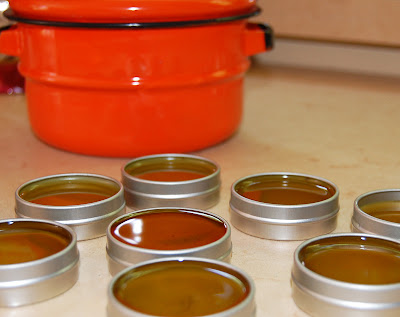i made a healing salve today. i started with fresh plantain (Plantago spp.), comfrey (Symphytum officinale) and lavender (Lavendula dentata).
i did a rough chop on the herbs...
and then put them in a pot with 1 cup high grade organic olive oil - you can see i decided to add calendula (Calendula officinalis) in the mix at the last minute.
let them simmer on the lowest flame possible for 45 minutes to an hour - then strain the herbs out. put the infused oil back in the pot and add 1/4 cup beeswax and melt the wax. shouldn't take more than a few minutes. after the beeswax is melted i added ylang ylang (Cananga odorata), geranium (Pelargonium graveolens) and rosewood (Aniba rosaeodora) essential oil - about 10 drops of each. you can add whatever essential oils you like. pour the liquid into tins.

the salve will completely harden in about an hour. this salve is very healing and comforting for the skin. it can be used for chapped dry skin, surface burns and bug bites.
calendula is soothing, moisturizing and cooling, it can help decrease inflammation and is healing for sunburn and skin irritations.
comfrey is incredibly healing for wounds and skin problems. The leaf and root of comfrey contain allantoin, a constituent known to aid wound healing. Comfrey oil or salve will help stop bleeding and soothe wounds. it is also known for its ability to knit things back together, and can heal a cut or wound very quickly. (It is important to be sure your wound is thoroughly cleaned so that you do not heal an infection inside of the wound.)
plantain oil helps relieve skin and scalp irritation, reduce inflammation. Plantain is traditionally used to nourish and treat sensitive, irritated skin and scalp, to help restore injured or tired skin, and as restorative and anti-aging skin treatment. a poultice of hot leaves placed on cuts and wounds helps draw out thorns, splinters and inflammation.
lavender helps to prevent tissue degeneration and stop bleeding in wounds. it balances the skin, making it ideal for any skin type. it can stimulate the growth of new skin cells. it helps the formation of healing scar tissue, while preventing scar keloids (scarring) on the healed skin, making it perfect for any wounds.
